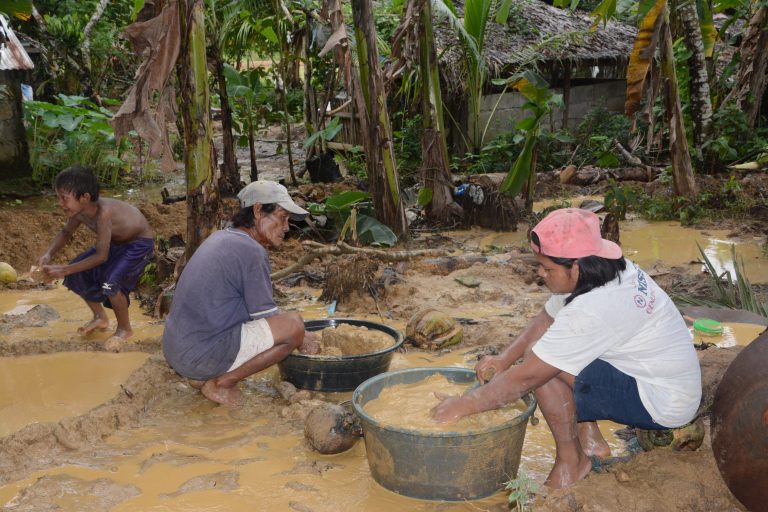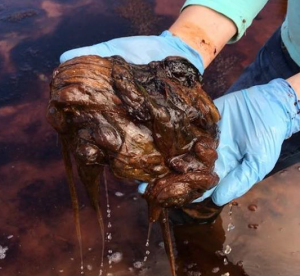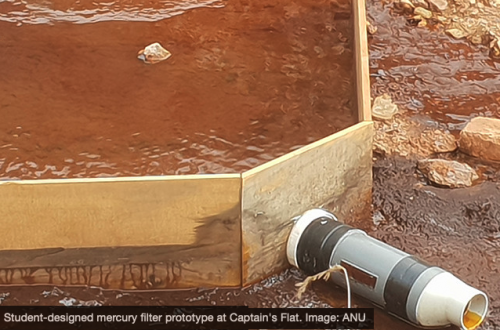Small-scale and artisanal gold mining accounts for 12-15% of the world’s gold supply and commonly uses mercury for amalgamation during extraction. Such mining is often short-term, performed informally, and without legal protection or environmental regulation. This results in the sector contributing 35% of all mercury contamination released to the environment (UN Environment Programme, Artisanal and Small-Scale Gold Mining). In addition to direct human exposure, tailings easily enter waterways causing contamination of water, soil and biota which takes hundreds of years to decay naturally. Remediation of sites and contamination is expensive and complex.

A combined team of engineering, chemistry and environmental students and researchers at the Australian National University explored the potential of a novel polysulfide developed by Chalker Research Labs at Flinders University to support in-situ remediation at small-scale and artisanal mine sites (https://www.chalkerlab.com). One team explored the use of the polysulfide to absorb mercury directly from waterways by channelling water through a filter of known amount of the material. Parallel research identified that most mercury is taken up plants and biomass through bioaccumulation.

From this, phytoremediation was explored as a potential approach. Biomass was collected and first oxidised to release the organically bound mercury. The polysulfide was then exposed to the solution to absorb the mercury. Tests demonstrated this achieved similar mercury absorption and removal effectiveness as activated charcoal which is often used [1]. However, the polysulfide is easier to handle, process and collect, highlighting its potential to simplify and reduce the cost of remediation of contaminated legacy mine sites.
By Dr Jeremy Smith – Australian National University
______________________________
[1] Erb, K., “Assessing the feasibility of innovative polysulfides to assist in situ phytoremediation techniques in remediation of legacy mine mercury contamination”, Honours Thesis submission, ANU, 2019


Twitter